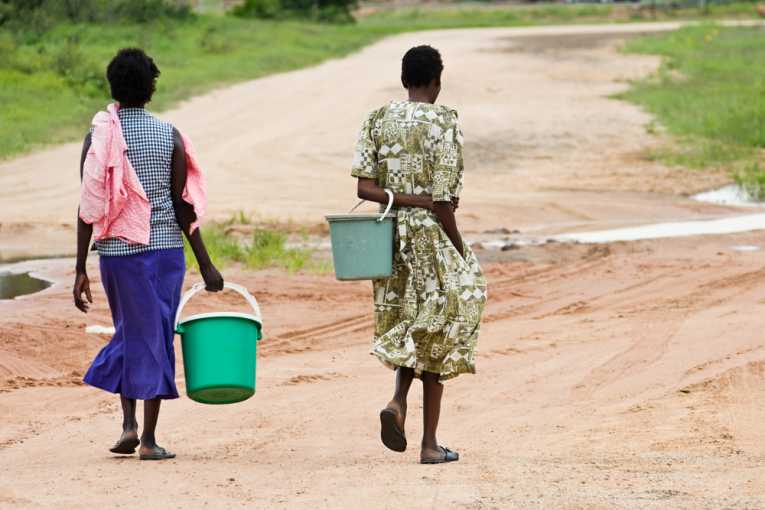It's said that while a person can survive without food for weeks, without water they would perish in a handful of days. But a new report on water scarcity, just published on PloS ONE, shows that 2.7 billion people endure the meagerest of water rations for a month or more, in some of the world's heavily-stressed water basins. That can seriously affect health, food harvests and even economic growth, say the authors, whose paper takes a fresh look at uncovering water scarcity.
"Freshwater is a scarce resource; its annual availability is limited and demand is growing," said lead author Arjen Hoekstra, from the University of Twente. "There are many places in the world where serious water depletion takes place: rivers running dry and dropping lake and groundwater levels." But the water stress resulting from scarcity has not always been properly picked up in the past.
Digging deeper to find the dry spots
When maps of water use and water supply are compared, it's been common to look at totals for the whole of the year. That can be misleading, because the amount rainfall zips up and down so much, from season-to-season. Which is why the research team behind this report - Global Monthly Water Scarcity - dug a little deeper, to look at how water flows varied from month to month. They also tried to peg how much monthly water local ecosystems needed to function properly.
The results, from over 400 river basins across the globe, present a stark snapshot of water's unequal spread. For those living in two hundred of the river basins looked at - that's nearly 3 billion people - water shortages were severe for at least one month in the year. Some areas were being particularly hard-hit. Much of the Indus river valley, home to 200 million people, suffers severe water shortages for 8 months out of 12. And in Australia, the Murray-Darling river system is close to running dry for half the year, causing severe stress to the area's ecosystems.
Farmers sucking harder on scarce resource
The most intense users of water are to be found in cities, but it is irrigated agriculture that sucks most greedily on the sparse water resource, explained report author Brian Richter. "Cities use more water than crops on a per-area basis, but it's important to note that irrigated agriculture occupies four times as much land as cities do. We need to help farmers implement state-of-the-science irrigation methods and improve the productivity of rain-fed farms as soon as possible. We are going to have to produce more food with less water."
Water scarcity results in competition for water amongst local people, farmers and industry - so raising the potential for conflict. An example of constrained water supplies building into tension is to be found in Pune, a city close to Mumbai in western India. There locals have had to pay for water tankers after the water utility failed to meet their supply quotas. "We were frantically calling local authorities to take stock of the situation, but we could not get any information. The situation was miserable," a villager from Sanewadi told the Times of India.
It seemed the local reservoirs had mysteriously 'lost' a third of their capacity, with some local politicians pointing the finger at surreptitious use by farmers for irrigation. This could kind of situation could become more common, if global warming increases the frequency of droughts. "In places with multiple months of scarcity, they are likely experiencing serious competition for water," said Richter. "During droughts they'll have economic impacts in agriculture, power production or other industries."
While this report has picked up on submerged aspects of the water issue, it may also help to provide solutions. The wide geographical spread of the report, and its careful detailing of water supply throughout the year, should help planners to eke out water uses more sustainably. Study co-author Ashok Chapagain, from the WWF, said "Annual averages can mask what is really happening in a basin. Visualizing water scarcity month-by-month will help guide water allocations so as to meet social and economic demands, and the needs of rivers themselves."










